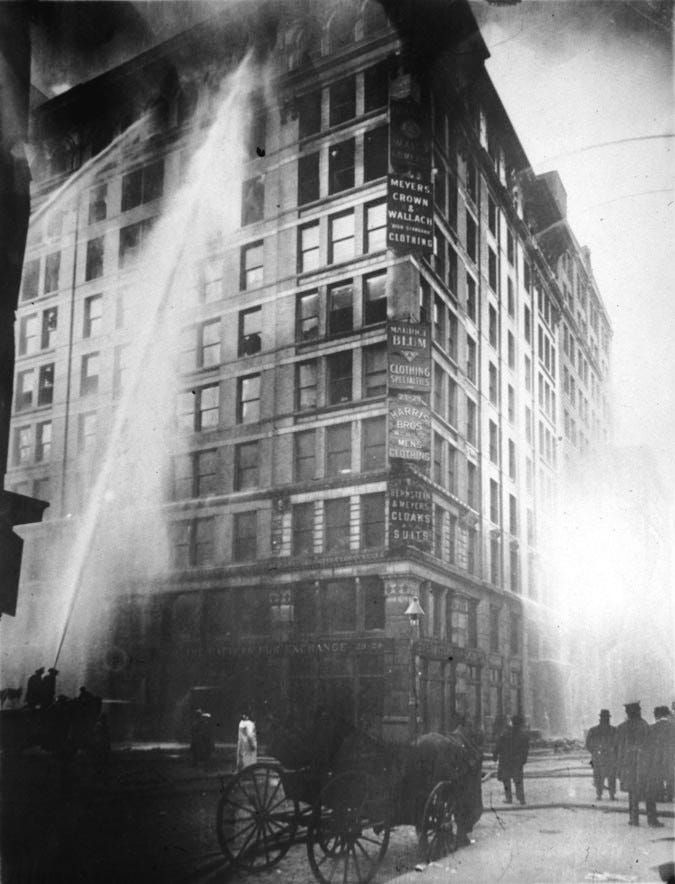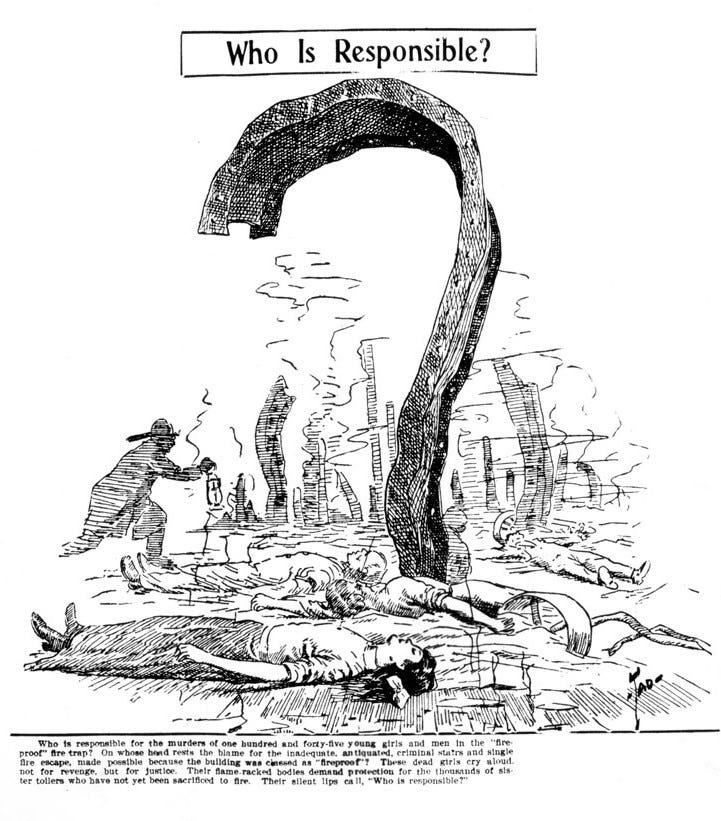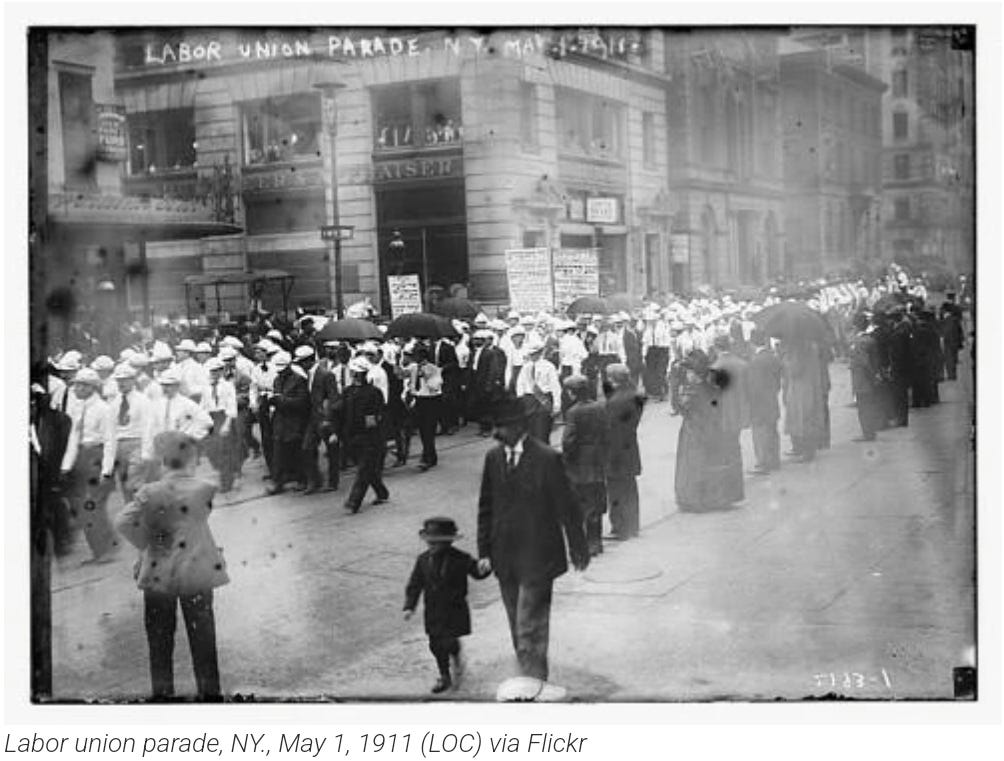The Triangle Shirtwaist Factory Fire of 1911:
A Catalyst for Workers' Rights and Its Relevance Today
On March 25, 1911, one of the deadliest industrial disasters in U.S. history unfolded in New York City. The Triangle Shirtwaist Factory fire claimed the lives of 146 workers, most of them young immigrant women, and exposed the horrific working conditions faced by laborers in the early 20th century. This tragedy became a catalyst for the labor movement, leading to sweeping reforms in workplace safety and workers' rights. Over a century later, its legacy continues to resonate in the ongoing fight for fair labor practices and human rights.
The Factory and Its Workers
The Triangle Shirtwaist Factory, located in the Asch Building in Greenwich Village, Manhattan, was owned by Max Blanck and Isaac Harris. Known as the "Shirtwaist Kings," Blanck and Harris were notorious for their harsh treatment of workers and their resistance to labor unions. The factory produced shirtwaists (blouses), a popular garment at the time, and employed around 500 workers, primarily young Jewish and Italian immigrant women aged 14 to 23. These women worked long hours, often up to 14 hours a day, for meager wages of about $7–12 per week.(Greenwald, 2005).
The factory was located on the 8th, 9th, and 10th floors of the Asch Building, which was considered "fireproof." However, the interior was filled with flammable materials, including fabric scraps, tissue paper, and wooden tables, creating a tinderbox waiting to ignite (Von Drehle, 2003).
The Fire: A Preventable Tragedy
The fire began around 4:40 PM on the 8th floor, likely sparked by a discarded cigarette or faulty electrical equipment. It spread rapidly, fueled by the flammable materials scattered throughout the factory. Workers on the 8th floor were able to alert the 10th floor by telephone, but the 9th floor, where most of the victims were, received no warning (Stein, 1962).
Panic ensued as workers tried to escape. Many rushed to the exits, only to find them locked—a common practice by the owners to prevent theft and unauthorized breaks. The factory had only one functioning elevator, which made about four trips to rescue workers before it broke down. Desperate workers jumped down the elevator shaft or crowded onto the inadequate fire escape, which collapsed under their weight (McClymer, 1998).
Firefighters arrived quickly, but their ladders only reached the 6th floor, leaving those on the 9th and 10th floors with no way to escape. In a horrifying scene, 62 workers jumped from the windows to their deaths rather than burn alive. Witnesses described the sight of bodies hitting the pavement as "raining souls" (Von Drehle, 2003).
By the time the fire was extinguished, 146 workers had perished, including 123 women and 23 men. Many of the victims were teenagers, some as young as 14 years old. The majority were Jewish and Italian immigrants, reflecting the demographics of the factory workforce (Greenwald, 2005).
Public Outrage and the Push for Reform
The Triangle fire sparked widespread outrage and protests. Over 400,000 people attended a memorial march for the victims, and the tragedy became a rallying cry for labor reform. The public demanded accountability and change, leading to the establishment of the New York State Factory Investigating Commission (FIC). Led by Frances Perkins (who later became the first female U.S. Secretary of Labor) and Alfred E. Smith, the FIC conducted investigations into factory conditions and recommended sweeping reforms (Perkins, 1946).
Between 1911 and 1914, New York State passed 38 labor laws aimed at improving workplace safety and workers' rights. These included:
Improved fire safety standards, such as unlocked doors, sprinkler systems, and fire alarms.
Limits on working hours for women and children.
Mandatory workplace inspections and safety drills (Stein, 1962).
The fire also strengthened the labor movement, particularly the International Ladies' Garment Workers' Union (ILGWU), which fought for better wages and working conditions. The tragedy highlighted the importance of unions in advocating for workers' rights and safety (McClymer, 1998).
Legacy and Relevance Today
The Triangle Shirtwaist Factory fire remains a pivotal moment in the history of workers' rights. It exposed the dangers of unregulated capitalism and the exploitation of vulnerable workers, particularly immigrants and women. The reforms it inspired laid the foundation for modern labor laws and workplace safety standards.
However, the lessons of the Triangle fire are still relevant today. Workers in industries like fast fashion, agriculture, and the gig economy continue to face unsafe conditions, low wages, and exploitation. For example, the 2013 Rana Plaza collapse in Bangladesh, which killed over 1,100 garment workers, echoed the Triangle fire in its preventable nature and devastating toll (Human Rights Watch, 2013).
Advocacy groups and labor unions continue to fight for fair wages, safe working conditions, and stronger protections for workers. Movements like the Fight for $15 and campaigns to improve conditions for gig economy workers draw inspiration from the labor activism that emerged after the Triangle fire (Greenhouse, 2019).
Conclusion:
The Triangle Shirtwaist Factory fire was a tragedy born of greed and neglect, but it also became a catalyst for change. It reminded the nation of the importance of protecting workers' rights and ensuring safe working conditions for all. As we reflect on this event, we must honor the memory of the victims by continuing to fight for justice and equality in the workplace. The legacy of the Triangle fire is a call to action—a reminder that the struggle for workers' rights is far from over.
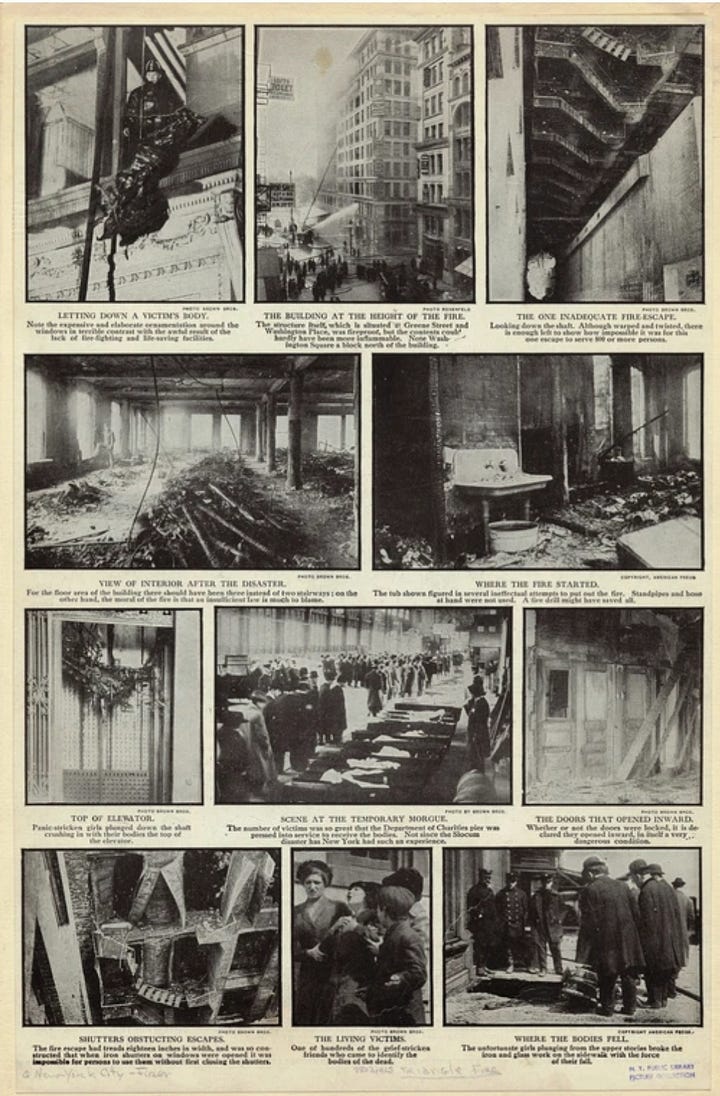


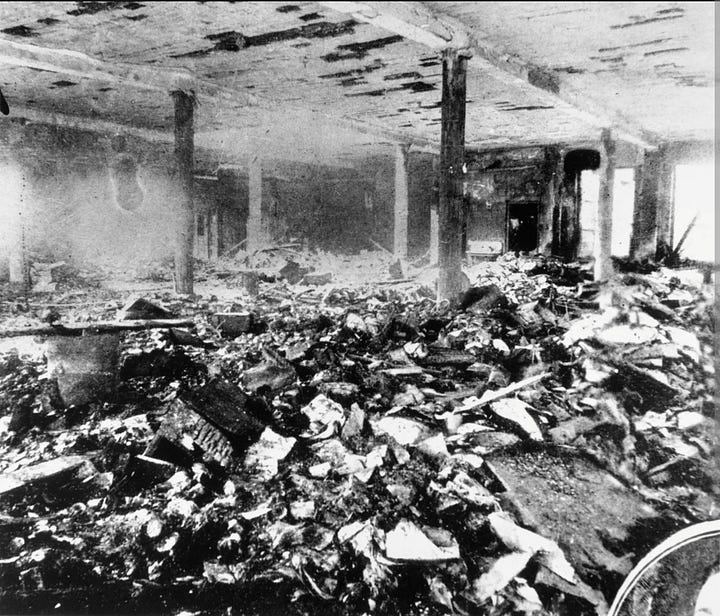
References:
- Greenwald, R. A. (2005). *The Triangle Fire, the Protocols of Peace, and Industrial Democracy in Progressive Era New York*. Temple University Press.
- Von Drehle, D. (2003). *Triangle: The Fire That Changed America*. Atlantic Monthly Press.
- Stein, L. (1962). *The Triangle Fire*. Cornell University Press.
- McClymer, J. F. (1998). *The Triangle Strike and Fire*. Harcourt Brace College Publishers.
- Perkins, F. (1946). *The Roosevelt I Knew*. Viking Press.
- Human Rights Watch. (2013). *"Bangladesh: Rana Plaza Collapse Highlights Need for Reform."* Retrieved from [www.hrw.org](https://www.hrw.org).
- Greenhouse, S. (2019). *"The Fight for $15: From the Streets to the Ballot Box."* *The New York Times*. Retrieved from [www.nytimes.com](https://www.nytimes.com).






